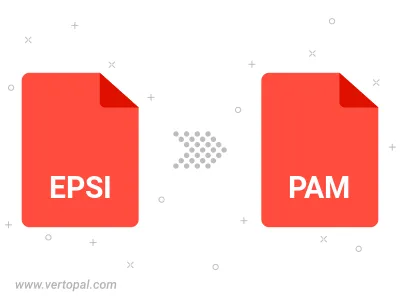Convert EPSI to PAM
Convert EPSI images to PAM format, edit and optimize images online and free.

EPSI, standing for Encapsulated PostScript Interchange, is a file extension used primarily in the printing and graphic design industries. It stores PostScript data along with a low-resolution preview in bitmap format, facilitating the visualization of graphic content in layout applications without needing to interpret the complex PostScript code. Introduced in the 1980s by Adobe Systems, EPSI files serve as a bridge between different software applications, ensuring consistent and high-quality output in various publishing workflows. Their efficiency and adaptability have made them a standard for exchange of graphic data in professional environments.
The PAM (Portable Arbitrary Map) file extension is a versatile bitmap format used primarily in UNIX-based systems. It extends the Portable Any Map (PNM) format, supporting 2-dimensional image data storage in a binary format with an ASCII header. Introduced to enhance flexibility and interoperability in image processing, PAM files are utilized for various graphical applications, offering a standardized method for handling diverse image types. This format's history traces back to the need for a more adaptable and comprehensive bitmap solution within the PNM family.
Choose any EPSI image from your computer, or drag & drop a EPSI file onto this page.
To customize EPSI to PAM conversion, use the available tools before clicking the Convert button.
Wait a couple of seconds for the converter to do the hard job, then download your PAM file.

To change EPSI format to PAM, upload your EPSI file to proceed to the preview page. Use any available tools if you want to edit and manipulate your EPSI file. Click on the convert button and wait for the convert to complete. Download the converted PAM file afterward.
Follow steps below if you have installed Vertopal CLI on your macOS system.
cd to EPSI file location or include path to your input file.Follow steps below if you have installed Vertopal CLI on your Windows system.
cd to EPSI file location or include path to your input file.Follow steps below if you have installed Vertopal CLI on your Linux system.
cd to EPSI file location or include path to your input file.